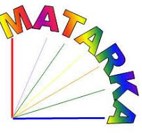Detailed description of common ragweed (Ambrosia artemisiifolia L.) inflorescence by using stereomicroscopic focus stacking technique
Abstract
In this study, male and female inflorescences of the monoecious common ragweed (Ambrosia artemisiifolia L.) were investigated with digital microscope by applying the stereomicroscopic focus stacking technique. The novelty of this work is providing a detailed morphological description of the inflorescences in Hungarian and the high-quality close-up photographs allowing visualization of microscopic structures of male and female flowers. These images clearly display individual floral structures and their appendages, such as colleters on the surface of corolla, pistillodium in the male flower, anthers and their claws that fit together, and the connate phyllaries of female flower surrounding the papillose long stigmas. Isolation of floral structures is a prerequisite of the identification of genes associated with flower development.
References
APG – Angiosperm Phylogeny Group 2016: An update of the Angiosperm Phylogeny Group classification for the orders and families of flowering plants: APG IV. Botanical Journal of the Linnean Society 181: 1–20.
Basky Zs. 2007: A Magyarországon őshonos levéltetvek hatása a parlagfű (Ambrosia artemisiifolia L.) fejlődésére. Magyar Gyomkutatás és Technológia 8(1): 21–40.
Basky Zs. 2008: Adatok a parlagfű (Ambrosia artemisiifolia L.) fenológiára alapozott kaszálás optimális időpontjának meghatározásához. Magyar Gyomkutatás és Technológia 9(2): 21–39.
Bassett I. J., Crompton C. W. 1975: The biology of Canadian weeds. 11. Ambrosia artemisiifolia L. and A. psilostachya DC. Canadian Journal of Plant Science 55: 463–476.
Béres I. 2003: Az ürömlevelű parlagfű (Ambrosia artemisiifolia L.) elterjedése, jelentősége és biológiája. Növényvédelem 39: 293–302.
Béres I., Kazinczi G., Novák R., Hoffmanné Pathy Zs. 2006: Az ürömlevelű parlagfű elterjedése, morfológiája, biológiája, jelentősége és a védekezés lehetőségei. Gyakorlati Agrofórum Extra 16: 4–23.
Csontos P., Vitalos M., Barina Z., Kiss L. 2010: Eddig feldolgozatlan herbáriumi adatok újraértelmezik a parlagfű felbukkanását és korai terjedését a Kárpát-Pannon térségben. Botanikai Közlemények 97: 69–77.
Darók J. 2011: Növényanatómiai-botanikai terminológiai szótár. Akadémiai Kiadó, Budapest, 431 pp.
Essl F., Biró K, Brandes D., Broennimann O., Bullock J. M., Chapman D. S., Chauvel B., Dullinger S., Fumanal B., Guisan. A., Karrer G., Kazinczi G., Kueffer C., Laitung B., Lavoie C., Leitner M., Mang T., Moser D., Müller-Schärer H., Petitpierre B., Richter R., Schaffner U., Smith M., Starfinger U., Vautard R., Vogl G., von der Lippe M., Follak S. 2015: Biological flora of the British Isles: Ambrosia artemisiifolia. Journal of Ecology 103: 1069–1098.
Funk V. A., Susanna A., Stuessy T. F., Robinson H. 2009: Classification of Compositae. In: Funk V. A., Susanna A., Stuessy T. F., Bayer R. J. (eds): Systematics, Evolution, and Biogeography of Compositae. International Association for Plant Taxonomy, Vienna, Austria. pp. 171–193.
Hegi G. 1906: Illustrierte Flora von Mitteleuropa. Band VI. J. F. Lehmanns Verlag, München, 544 pp.
Kazinczi G., Béres I., Novák R., Karamán J. 2009: Újra fókuszban az ürömlevelű parlagfű (Ambrosia artemisiifolia L.). Növényvédelem 45(8): 389–403.
Kőmíves T., Béres I., Reisinger P., Lehoczky É., Berke J., Tamás J., Példy A., Csornai G., Nádor G., Kardeván P., Mikulás J., Gólya G., Molnár J. 2006: A parlagfű elleni integrált védekezés új stratégiai programja. Magyar Gyomkutatás és Technológia 7: 5–49.
Mátyás K. K., Hegedűs G., Taller J., Farkas E., Decsi K., Kutasy B., Kálmán N., Nagy E., Kolics B., Virág E. 2019: Different expression pattern of flowering pathway genes contribute to male or female organ development during floral transition in the monoecious weed Ambrosia artemisiifolia L. (Asteraceae). PeerJ 7: e7421. https://doi.org/10.7717/peerj.7421
Payne W. W. 1963: The morphology of the inflorescence of ragweeds (Ambrosia-Franseria: Compositae). American Journal of Botany 50: 872–880.
Podani J. 2003: A szárazföldi növények evolúciója és rendszertana. ELTE Eötvös Kiadó, Budapest, 296 pp.


















